
We are celebrating 15 years — and counting — of stories that are deeply researched and deeply felt, that build a historical record of what the city has been.
We are celebrating 15 years — and counting — of stories that are deeply researched and deeply felt, that build a historical record of what the city has been.
Natural gas accounts for a larger and larger proportion of total energy consumption in New York City. Previously, Nicholas Pevzner has considered the messy history and present dangers of the gas that flows below New York City streets. In this third and final look at methane in the urban landscape, we zoom out to consider the web of gas production and conveyance that reaches from Pennsylvania, West Virginia, and Ohio back to New York City. As the production and use of natural gas have skyrocketed over the past decade, what are the consequences for communities all along this snaking delivery system? New York State banned fracking in 2014 out of concern for its adverse environmental and health impacts, but leaks and other malfunctions in the system continue to affect residents living in proximity to the thousands of miles of pipeline that traverse the state. And as evidence mounts about the cumulative quantity of methane seeping into the atmosphere, the narrative of natural gas as a “cleaner” fossil fuel is increasingly being revealed as myth. As we invest today in the energy infrastructure that will power tomorrow, calls grow louder for the current gas infrastructure system to be improved, while others advocate for a rapid transition away from gas use altogether. To conceptualize what is at stake in this debate, here Pevzner documents the human impact, technology, and territory of our interstate gas infrastructure.
The city is not a closed system, but a dense node of material consumption importing supplies and resources from a vast territory of extraction. In New York City, water flows down from a network of upstate reservoirs; building materials arrive by rail and barge from quarries and factories around the region; food is shipped in from around the world. Natural gas, the source of electricity and winter heating for millions of New Yorkers, is no different. The legacy patterns of gas distribution in the city have shaped its underground infrastructure. But this is just the terminus of a much more extensive infrastructural network — the “downstream” end, in industry parlance. Let us extend out to consider the larger geography that supplies New York’s ever-growing gas habit, for this gas comes from somewhere. Ten years into the northeastern United States’ gas fracking revolution, that somewhere is increasingly communities like Amity, a small rural town in the southwest corner of Pennsylvania, or Dimock, PA, right next to the Pennsylvania-New York State border.
These towns are at the epicenter of the North American gas fracking boom thanks to their position atop the Marcellus Shale, a massive geologic formation spanning from West Virginia and eastern Ohio across a broad swath of Pennsylvania and up into New York State. The Marcellus is infused with as much as 500 trillion cubic feet of natural gas, making it the second-largest natural gas field in the world. Starting with the arrival of horizontal drilling and fracking in 2005, the Marcellus has been the site of a gas production boom of epic proportions, unleashing a flood of new natural gas onto the US market while extending a lifeline of temporary economic hope to swaths of Appalachia and rural Pennsylvania, along with some severe local harms.
From a vast extraction territory that stretches across the Marcellus, rival pipelines are under construction to the rich, densely-populated urban spine of the Northeast, hoping to get more gas to market and induce even more production. As we consider New York City’s own gas infrastructure and gas usage, we need to also understand where the gas itself comes from, and the places past which it flows. These places are all connected — they are communities at different ends of the same pipe.
Since 2005, over 16,000 wells have been drilled in the Marcellus Shale territory in pursuit of gas. In the middle of one of the densest concentrations of gas wells in the Marcellus, 35 miles southwest of Pittsburgh, lies Amity, Pennsylvania. It is the setting for journalist Eliza Griswold’s devastating book, Amity and Prosperity, which traces several families’ fight for clean water after the arrival of gas drilling near their home.
Figuring prominently in Griswold’s account is Stacey Haney, a nurse living on her family’s farmstead in Amity, who is inadvertently thrust into the spotlight when her uphill neighbor signs a lease for three gas wells, a frack pond, and a drill-cuttings pit. Fracking a single well takes millions of gallons of water, pumped at high pressure together with a mixture of proprietary chemicals, solvents, and sand into the well, cracking thousands of fissures into the rock seam to release the trapped gas. Much of the water then flows back to the surface, sometimes bearing naturally occurring radioactive materials such as radon, or ancient, long-dormant bacteria from deep underground. Perhaps unsurprisingly, shortly after the fracking begins on her neighbor’s property, Haney’s water goes bad. Her farm animals start dying, the family starts getting headaches and nosebleeds, and her teenage son gets dangerously sick. Haney’s water well is found to contain ethylene glycol, propylene glycol, methanol, propynol, chloroform, oil, and grease; she starts using bottled water. Eventually, exhibiting elevated arsenic levels and signs of exposure to a range of hydrocarbons and hydrogen sulfide — suggesting chemical exposure from the air as well as the water — the family moves out and abandons the farm.
Fears of chemical exposure, poisoned rivers and groundwater, and localized contamination have fueled opposition to gas fracking across the Marcellus, throughout the US, and abroad. Realization is also growing that along with the dramatic local environmental harms of fracking comes an outsize greenhouse gas footprint. This impact is harder to see but carries significant global risks in its contribution to climate change. As with the rest of the natural gas system, the primary greenhouse gas emissions threat from fracking is methane.
An enduring image of the danger of fracking is that of a gas field resident striking a match to light their tap water on fire. Through methane migration, methane can move up into the aquifer from the shale below, often thanks to poorly drilled and improperly poured gas wells. The result is flammable water. On occasion, the farmland above a well has been known to bubble with methane in the hours and days following a frack, as long-trapped methane finds new ways to get to the surface.
There are myriad places in the natural gas supply chain where accidental and unintentional methane releases can occur; these are collectively known as “fugitive methane emissions.” But methane does not only escape the system accidentally. Gas operators sometimes intentionally release methane into the air, when they need to purge a piece of equipment for repair or maintenance. This is called “venting.” Early in a fracking operation, before pipelines are built to carry it away, the gas is simply lit on fire and allowed to burn off. This is called “flaring.” When methane burns, it turns into carbon dioxide; CO2 is of course a greenhouse gas, and the main target of climate change mitigation efforts worldwide. But unburned methane, which is invisible and odorless, is an even more urgent worry from a climate change perspective — it is 84 times worse as a greenhouse gas than CO2 over the short term — and much harder to measure.
Gas production — the upstream end of the gas system — has a large methane footprint, which is only recently coming into focus as more and better studies begin to pinpoint sources of emissions. A 2018 study found that emissions at production sites are at least two times higher than the EPA’s official Greenhouse Gas Inventory estimate. Looking across 8000 gas production operations with aerial FLIR infrared cameras, researchers found large methane plumes wafting up from liquid storage tanks hatches and vents. The EPA’s numbers come from industry measurements, self-reported data that represent the process going right. The study found that most methane emissions are the result of the moments when something is going wrong.
From thousands of wellpads, each with multiple wells, small gathering pipelines snake across farms and fields and deliver the gas to gas processing plants, where impurities are removed and it is prepared for transfer via pipeline.
Methane leaks do not only happen at the upstream end of the pipe, but at every other stage of the natural gas system as well. Gas moves through a processing plant via compressors; compressor stations are also distributed along the pipeline every hundred miles or so to re-up the gas pressure and push it the next hundred miles, to the next compressor station and onward to its destination.
There are dozens of compressor stations along every pipeline, and over 300,000 miles of transmission pipeline in the US, with more on the way. Leaks from major compressor equipment, such as compressor seals and isolation valves account for about half of methane emissions in the midstream phase; another major source is “blowdowns” at compressor stations.
“Blowdowns” are routine events that vent unburned methane in big pulses, to empty out a portion of the pipeline every time there is maintenance or repairs. Residents living near compressor stations along the Millennium Pipeline in upstate New York State have complained of headaches and nosebleeds, and overwhelming tiredness — symptoms like those that troubled Stacey Haney’s family — along with the incredible noise and fumes that signal a blowdown in process.
Further down the supply chain, underground storage wells peppered along the pipeline hold the gas before it reaches the power plant or the city gate, in preparation for high wintertime demand or favorable market conditions. Gas storage, often underground in depleted oil fields or aquifers, is the final component of the mid-stream natural gas supply chain. Researchers have measured large, persistent emissions from leaking isolation valves at gas storage sites, as well as along the transmission pipelines themselves. But the most unpredictable and catastrophic sources of methane leaks are sudden “blowouts” in underground gas storage wells.
In 2015, 20 miles from downtown Los Angeles, one underground storage well failed spectacularly. Known alternately as the Aliso Canyon gas leak or the Porter Ranch gas leak, this sudden blowout spewed five billion cubic feet of methane into the atmosphere over the course of three months. Residents nearby complained of headaches and nosebleeds before being told to evacuate their homes. While the leak was invisible to the naked eye, FLIR infrared cameras captured the invisible geyser of methane, which at its peak effectively doubled the rate of methane emissions of the entire LA basin. As a New York Times Magazine article about the gas leak put it, at the peak of the blowout the single damaged well at Aliso Canyon “was by itself producing twice the emissions of every power plant, oil and gas facility, airport, smoke stack and tailpipe in all of greater Los Angeles combined.” After seven unsuccessful attempts to cut off the flow, the leak was finally plugged.
As the 2010 BP Deepwater Horizon blowout raised awareness about the risks of offshore oil drilling, the 2015 Aliso Canyon leak illustrated the dangers of fugitive methane emissions for the country as a whole. A study by the Harvard T.H. Chan School of Public Health discovered that as many as 2,700 active underground storage wells face the same design flaw that caused the Aliso Canyon blowout; many of them are clustered in Pennsylvania, Ohio, and New York State. Any one of them could be the next Aliso Canyon.
Resistance to the growing network of natural gas infrastructures began as a scattered set of local protests against specific eminent domain actions, specific compressor stations, or gas storage facilities serving individual pipelines. The intentionally disaggregated and piecemeal way in which the natural gas industry pursues new infrastructure keeps opposition scattered — while the environmental impacts of one component of the larger system may be evaluated, the combined impacts of the system have largely escaped scrutiny. (The nonprofit FracTracker Alliance and projects such as the You Are Here map by Sane Energy, have attempted to shed light on the overall gas system’s interconnected impacts.)
Since 2015, a drumbeat of proposed new pipeline projects has heralded the transport of more Marcellus gas into the dense cities of the Northeast, and pipeline protests have gained traction as a means to halt, or at least slow down, the planned gas infrastructure buildout. Increasingly, climate change motivates environmentalists’ opposition to all new gas infrastructure, expanding the initial opposition to natural gas fracking and the natural gas industry beyond water and health impacts.
The narrative of the relative climate benefits of switching from coal to natural gas has long been a central argument in favor of expanding natural gas infrastructure, and the idea of natural gas as a “bridge fuel” on the road to a renewable energy system is well established. But methane leakage throughout the gas system — from upstream frack sites, to midstream transmission and storage, to downstream distribution systems — undercuts the climate benefits of this switch.
If the gas industry wished to fix the short-term problems with methane leakage in the natural gas supply chain, it could quickly eliminate about 75 percent of all leakage by updating its hardware, implementing better production practices, replacing leaking valves, and capping leaking wells. About half of these emissions could be eliminated at no expense to the companies, since they would be able to sell the captured gas at a rate of roughly $5 per 1000 cubic feet. An Energy Institute report found that implementing only those measures that could pay for themselves would have “the same long-term impact on mitigating climate change as immediately shutting all existing coal-fired power plants in China.”
While some states have tried to nudge the industry to tighten up its game through state regulations, the current federal government has been intent on rolling back Obama-era methane leak regulations that are yet to fully take effect. Without a carbon price, which would reflect the true social cost of these emissions, a major portion of the natural gas industry is taking advantage of a license to pollute and avoiding the work of shoring up its claim of operating a responsible natural gas “bridge.”
In the long term, the problem with the “bridge fuel” narrative is that it condones the expansion of fossil fuel infrastructure, which is inconsistent with the kind of rapid decarbonization that climate scientists insist is urgently necessary. Natural gas may be the nail in the coffin of older fossil fuels like coal, and that nail is yet to be hammered in. But once coal has been eliminated from the system, natural gas will become the incumbent dirty fuel source.
With an economic life of 40 years or more, this new natural gas infrastructure would represent a sunk cost for an energy industry that would continue to advantage gas for decades, undercutting renewable energy projects even as new renewable energy infrastructure becomes cheaper than new gas plants. The Intergovernmental Panel on Climate Change (IPCC) reports that we need to be at net-zero fossil fuel emissions by 2050 to avoid the catastrophic effects of global warming, yet much of this gas infrastructure would still be in its middle age at that point. As accompanying financial incentives persist, burning natural gas and releasing CO2 will continue.
“Blowdowns,” “flaring,” “venting,” “blowouts”: These are more than just natural gas industry jargon. This specific terminology exists because these are not one-off occurrences; they signify something central to how the system currently works. The uncertainty around just how much gas the system loses makes good accounting of its actual climate change impacts extremely difficult. By extension, just how clean or dirty this natural gas bridge actually is remains unknown.
Ultimately, natural gas is extracted, transported, refined, and stored in order to be sold and consumed in major urban markets. Investments and decisions made in cities like New York actively connect millions of gas users to the territories and communities along the pipelines, out into the gas fields of Appalachia and beyond. The consequences of myriad leaks of methane and CO2 in these pipeline territories also flow the other way: destabilizing the global climate, which ultimately affects every place and every community, though not equally.
Around the world, there is a growing awareness of the interconnectedness of emission sources to carbon sinks, of individualized profits to socialized costs. A new “carbon literacy” shapes the way we talk about net-zero emissions targets, personal carbon budgets, and distant landscapes of deforestation and afforestation. As we consider the impact of natural gas infrastructure on local, regional, and planetary scales, we also need to lay the groundwork for methane literacy, though it may be harder to achieve.
With better methane sensors, as well as greater scrutiny and public oversight, a clearer picture of the costs of natural gas infrastructure will emerge. With an eventual price on carbon will come stronger incentives to minimize methane leaks and to switch to cleaner fuels. But if current plans are implemented, an expanded gas infrastructure will likely already be in the ground. Piece by piece, we are building our reliance on the “clean-burning bridge fuel” narrative — which increasingly appears to be flawed. Precisely when it needs to be designing and implementing the net-zero emissions systems of tomorrow, the energy industry is locking in a system with an enormous climate footprint. But it is not too late to change course. Energy transitions take decades to play out but, once set into motion, can develop incredible momentum. And we cannot wait. Looking back on this era, in one respect the heyday of the natural gas industry, perhaps we will also see the beginning of the industry’s decline, and the inevitable turn towards the all-renewable, all-electric future.
The author would like to thank Stephanie Carlisle for her generous and precise help and feedback in shaping this piece and helping guide my larger project of methane literacy.
The views expressed here are those of the authors only and do not reflect the position of The Architectural League of New York.
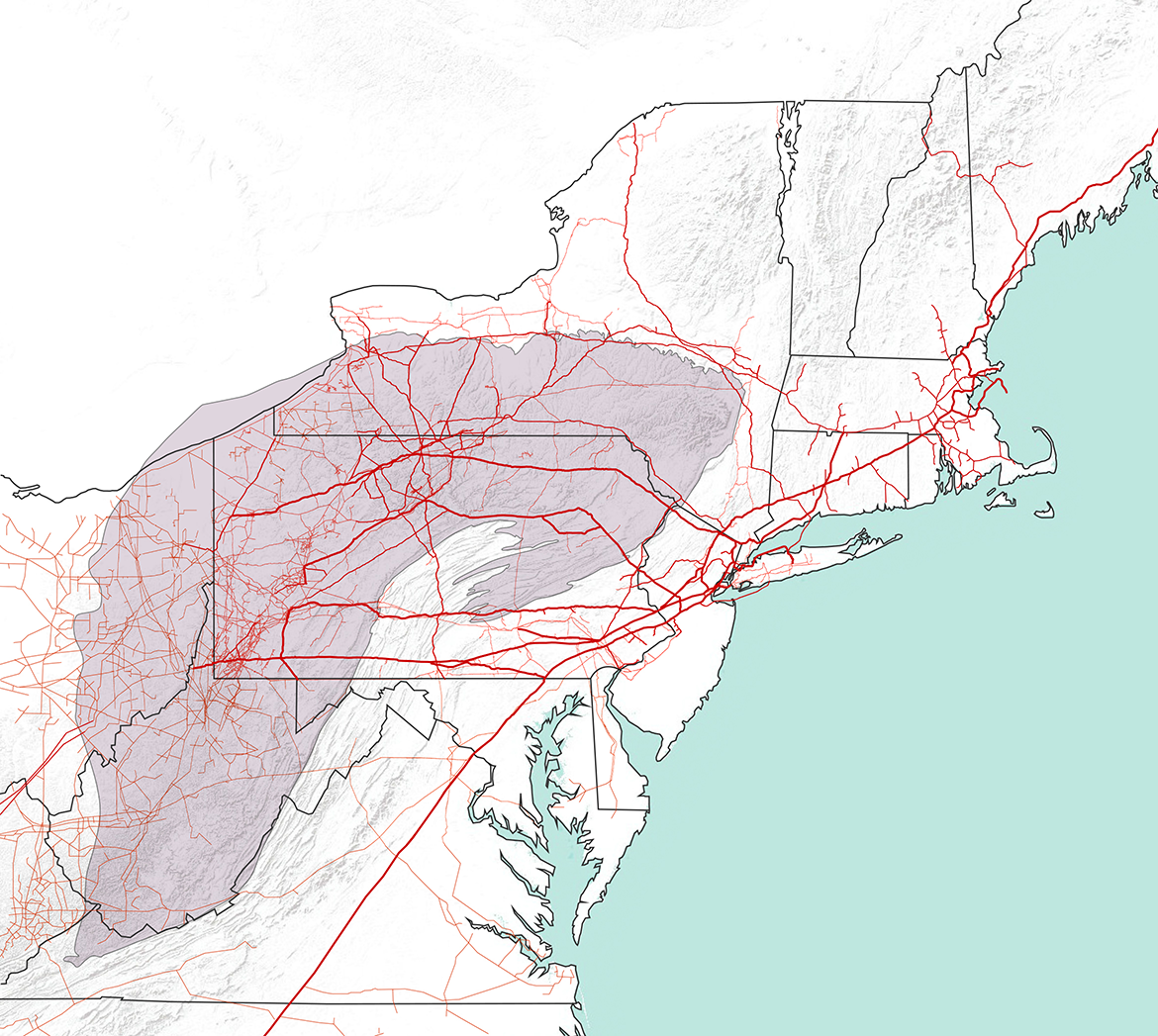
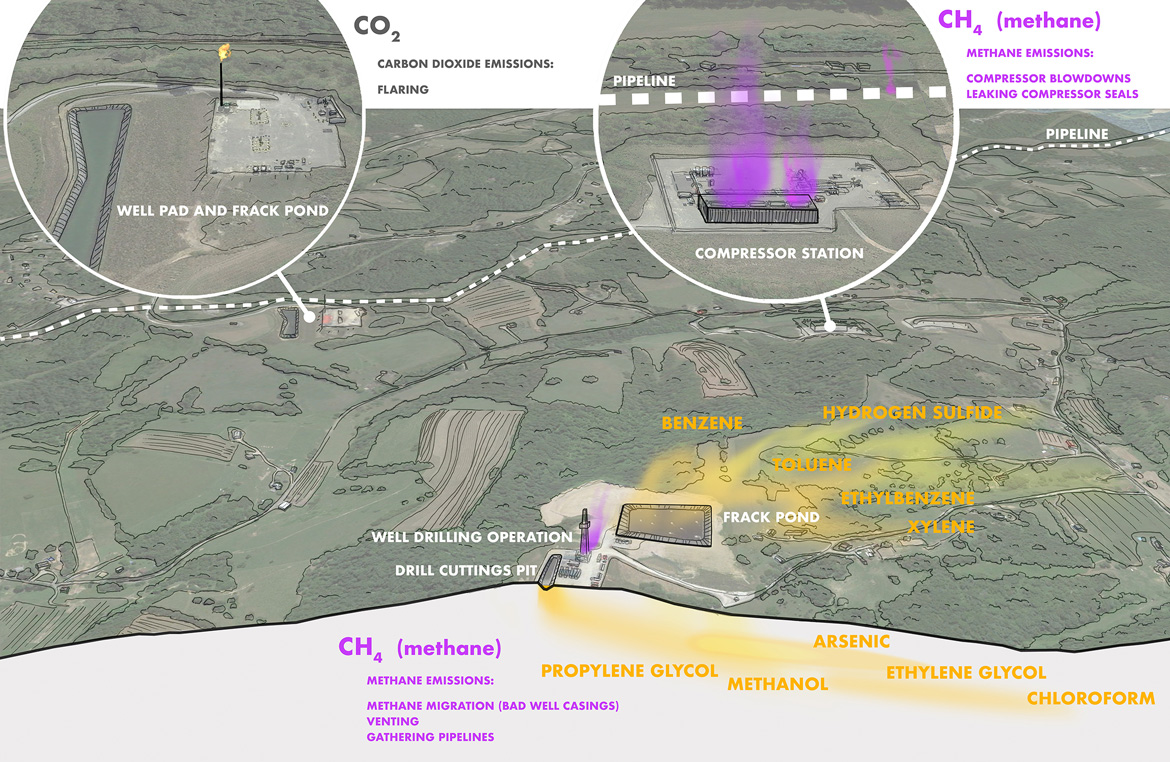

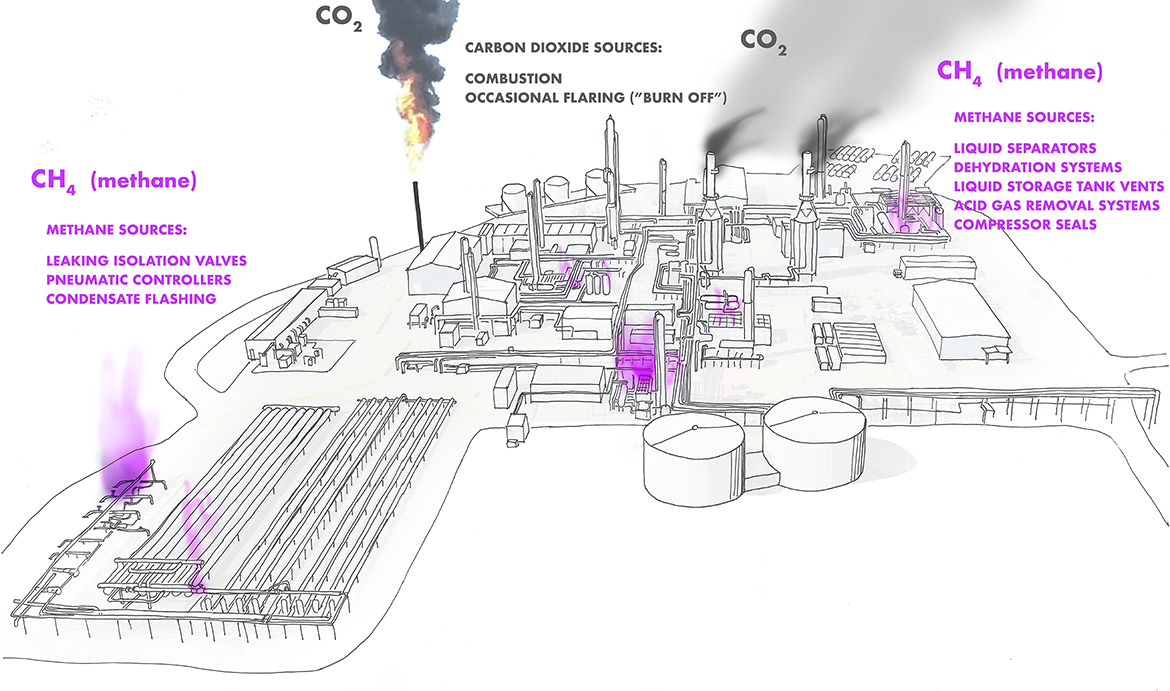
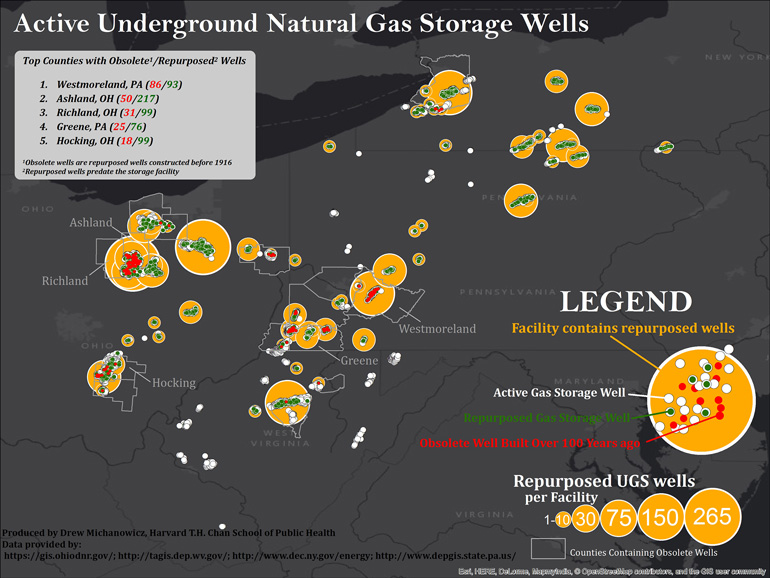

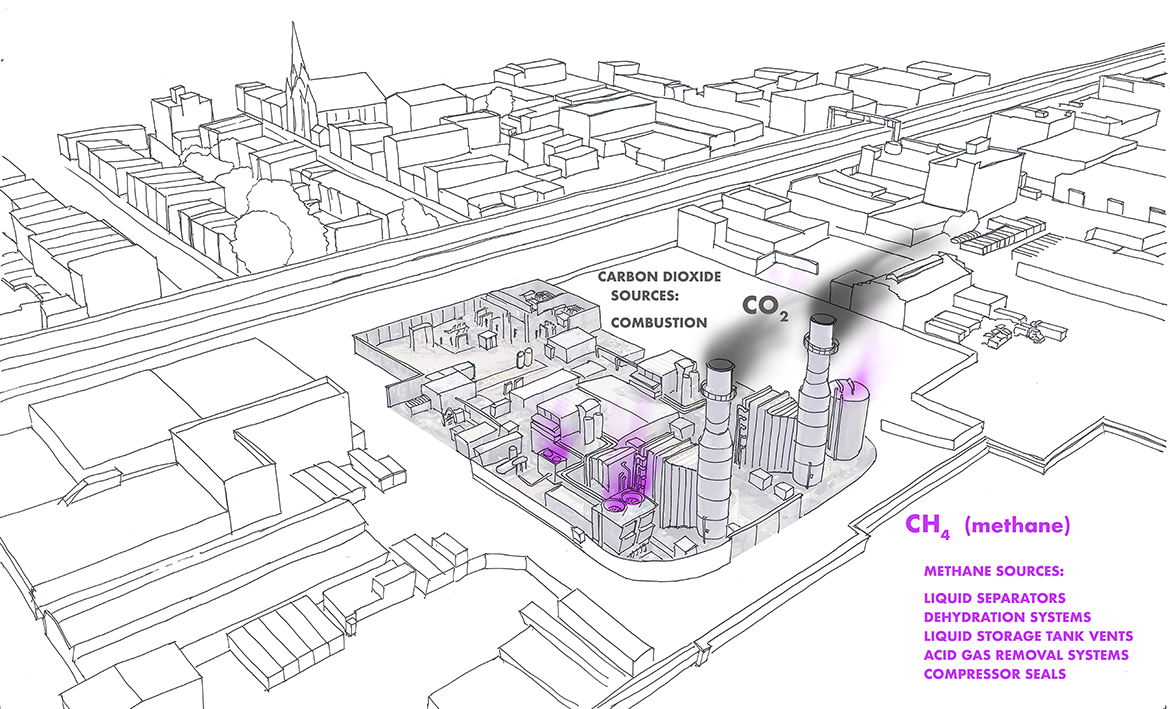
Comments